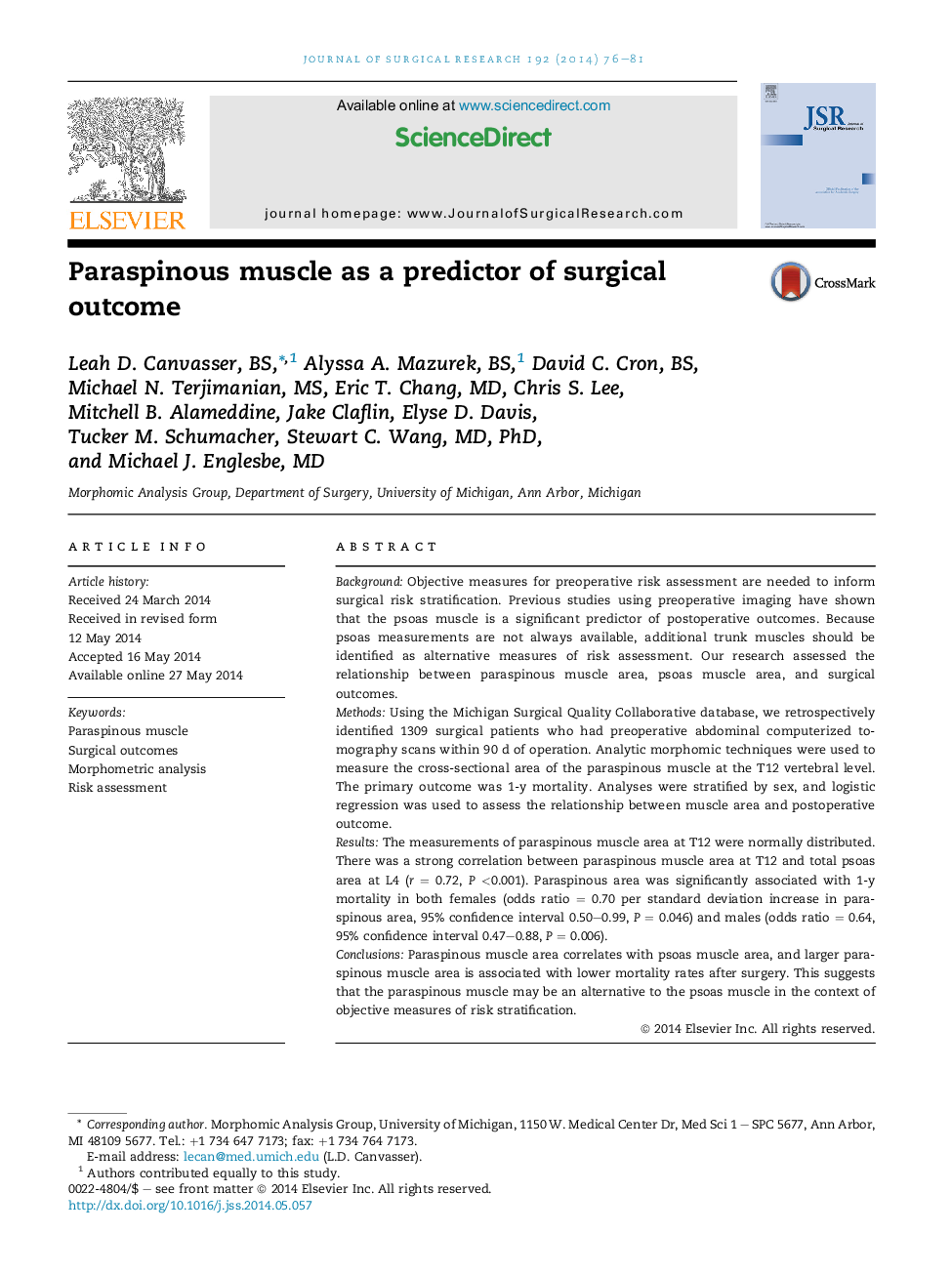| Article ID | Journal | Published Year | Pages | File Type |
|---|---|---|---|---|
| 4300067 | Journal of Surgical Research | 2014 | 6 Pages |
BackgroundObjective measures for preoperative risk assessment are needed to inform surgical risk stratification. Previous studies using preoperative imaging have shown that the psoas muscle is a significant predictor of postoperative outcomes. Because psoas measurements are not always available, additional trunk muscles should be identified as alternative measures of risk assessment. Our research assessed the relationship between paraspinous muscle area, psoas muscle area, and surgical outcomes.MethodsUsing the Michigan Surgical Quality Collaborative database, we retrospectively identified 1309 surgical patients who had preoperative abdominal computerized tomography scans within 90 d of operation. Analytic morphomic techniques were used to measure the cross-sectional area of the paraspinous muscle at the T12 vertebral level. The primary outcome was 1-y mortality. Analyses were stratified by sex, and logistic regression was used to assess the relationship between muscle area and postoperative outcome.ResultsThe measurements of paraspinous muscle area at T12 were normally distributed. There was a strong correlation between paraspinous muscle area at T12 and total psoas area at L4 (r = 0.72, P <0.001). Paraspinous area was significantly associated with 1-y mortality in both females (odds ratio = 0.70 per standard deviation increase in paraspinous area, 95% confidence interval 0.50–0.99, P = 0.046) and males (odds ratio = 0.64, 95% confidence interval 0.47–0.88, P = 0.006).ConclusionsParaspinous muscle area correlates with psoas muscle area, and larger paraspinous muscle area is associated with lower mortality rates after surgery. This suggests that the paraspinous muscle may be an alternative to the psoas muscle in the context of objective measures of risk stratification.
